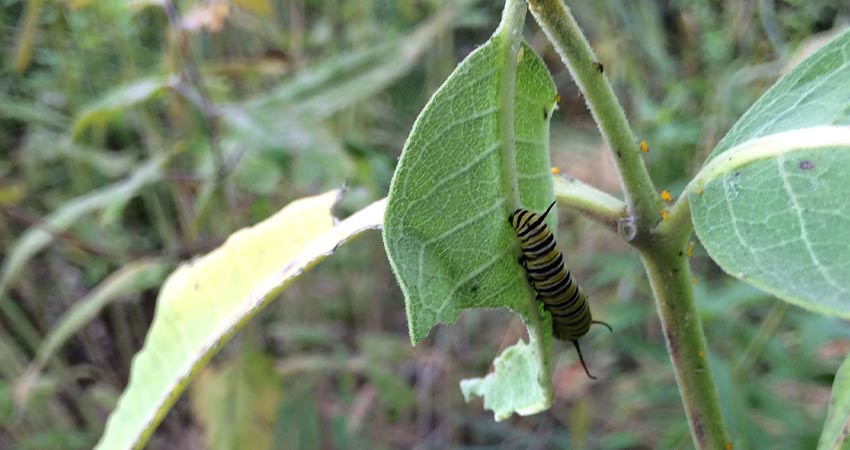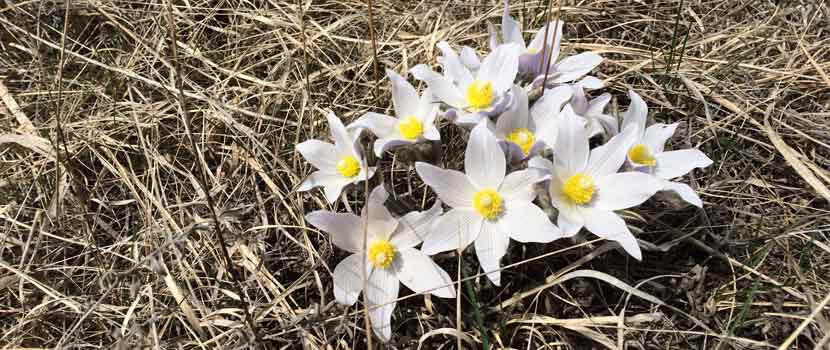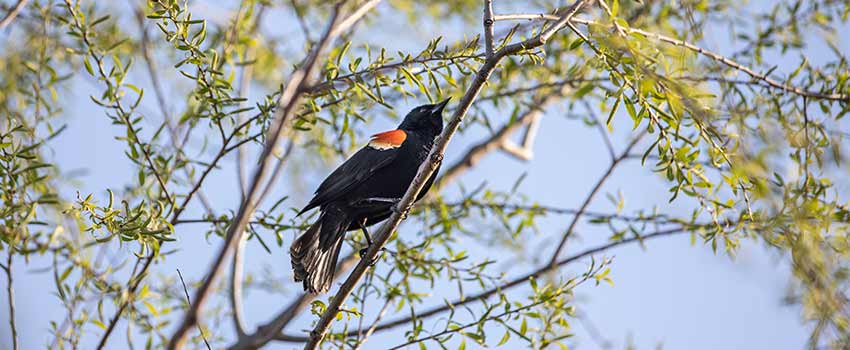
There are many benefits of gardening with plants native to Minnesota. They are better for the environment and provide food for local wildlife. In addition, native plants require much less maintenance than turf grass and ornamental plants — which means more time enjoying the natural beauty and less time laboring over your yard.
Let’s explore some of the perks of growing native plants and how to get started at home.
BENEFITS OF NATIVE PLANTS
Native plants seldom need watering, mulching or mowing once established, which saves time and money and helps the environment. Benefits include:
- Improved air quality. Native plants do not need to be mowed as often as a turf lawn, which reduces air pollution (a gas-powered push mower emits as much hourly pollution as 11 cars). Native plants also sequester, or remove, carbon from the air.
- Improved water quality and less water usage. Many native Midwestern plants have deep root systems, which increase the soil’s capacity to hold water. These root systems prevent erosion, reduce water runoff and filter stormwater to keep nutrients and pollutants out of our lakes, ponds, wetlands, rivers and streams.
- Less fertilizer and pesticide usage. Native plants are adapted to the local climate, soil conditions and pests where they naturally occur. Ornamental plants frequently require pest control, which is often deadly to beneficial native insects.
- Food and shelter for local wildlife. Native plants produce nectar, pollen and seeds that feed birds, butterflies, bees and other local wildlife. Most insects also require a specific host plant to lay eggs and feed their young. Many non-native, ornamental plants have little to no value for wildlife and produce protein-poor nectar or pollen for our critical pollinators.

GARDENING WITH NATIVE PLANTS
Now that we’ve discussed some benefits, here are six tips to get started growing native plants at home:
- Take inventory of what is currently in your yard. Are the plants perennials or annuals? Are they aggressive and need to be removed? Native plants already in the landscape can be left or transplanted.
- Start small. Select smaller areas such as a garden that needs a redo or where turf grass isn’t growing well. Even a small pollinator or raingarden will reduce turf area.
- Select for your landscape. Take note of soil conditions and light availability. There is a wide range of native species to pick from that can grow in a variety of conditions from sandy and dry soils to wet and shaded.
- Plant diversity is key. A larger variety of plants will support a larger variety of wildlife. Choose trees, shrubs, flowers, grasses and sedges with varying blooming times. Many pollinators have different times of peak activity so ensuring you have flowering plants from early spring to late fall is critical.
- Purchase from plant nurseries in your area. Having trusted plant material local to your region is a must. These plants will be the best suited to grow in local conditions. Check out this list from the Minnesota Department of Natural Resources.
- Seek support and resources. Not only are there options available for funding such as Lawn to Legumes but Minnesota has some excellent hubs for additional information.

Even planting small sections of your yard with native plants will have large environmental dividends. Now that you will spend less time and resources on your yard each year, sit back and enjoy the natural beauty!
Banner and archive photo courtesy of J. Pennoyer.
About the Author

Angela graduated from Minnesota State University—Mankato with degrees in ecology and geography. She has a passion for being outdoors and ensuring conservation of the natural heritage of our lands. As a wildlife biologist at Three Rivers Park District, she enjoys working on a wide range of projects from restoring prairies to pollinator surveys. Outside of work she can be found in the garden where she is in the good company of wonder dog, Sid, and two rented chickens, Cersi Henister and Princess Leialot.
Related Blog Posts
6 Wildflowers to Look for this Spring and Where To Find Them
By: Angela Grill
Three Rivers Park District is home to some special spring wildflowers, some of which have a very short above-ground life. Learn about six of these flowers and where to find them.
Phenology: Nature's Calendar
By: Ashley Smith
American robins, red-winged blackbirds, the call of wood frogs — signs of spring are upon us and we are taking note! Learn what it means to notice these changes of the season and how phenology helps local and global communities.
The Joy of Backyard Birding
By: Erin Korsmo
Keeping bird feeders is a rewarding experience. Read on to learn why you should consider keeping feeders and how to get started at home.



